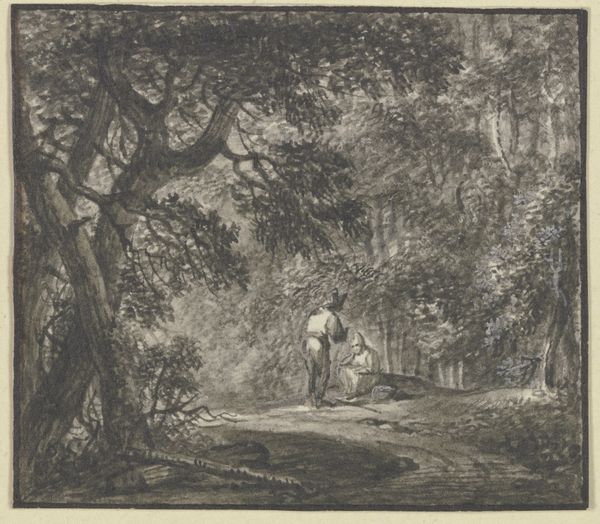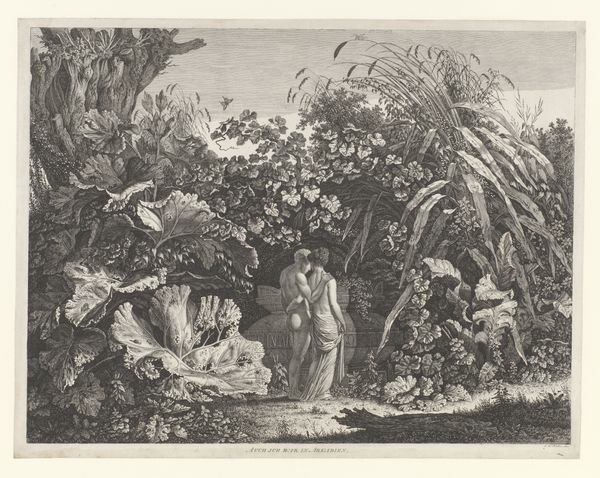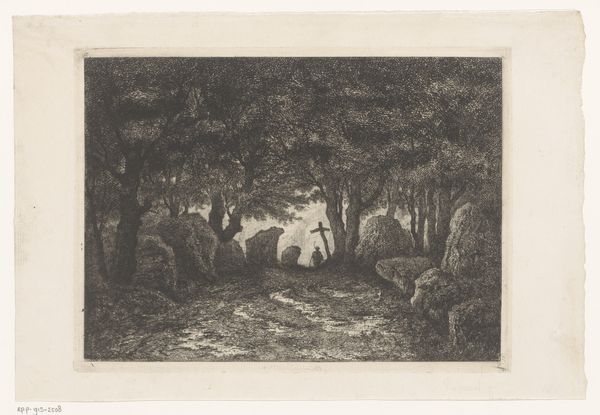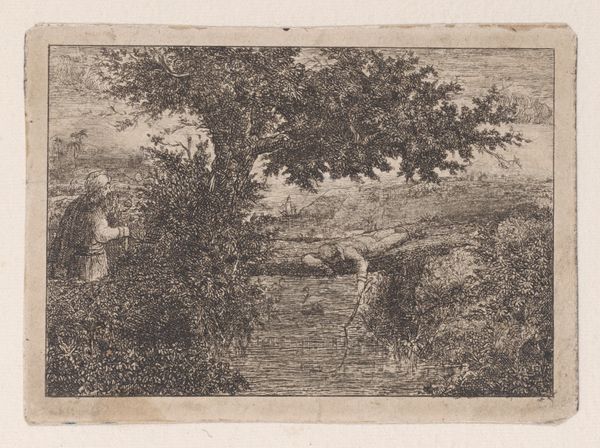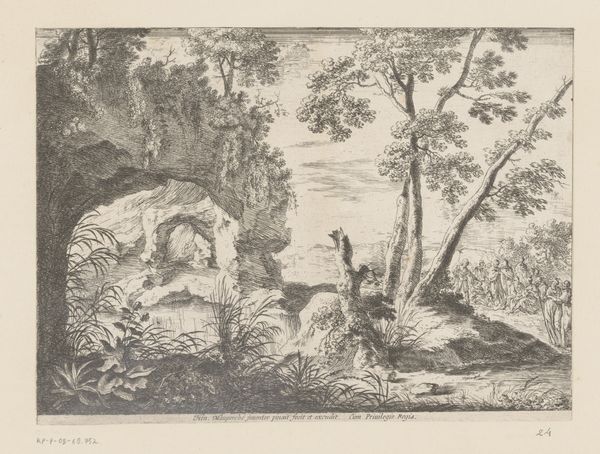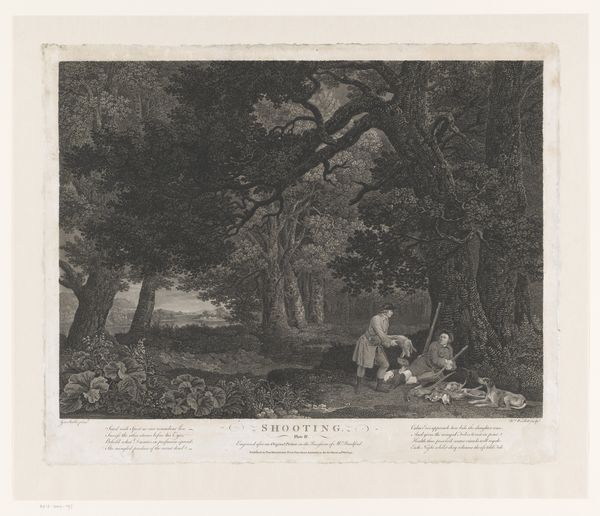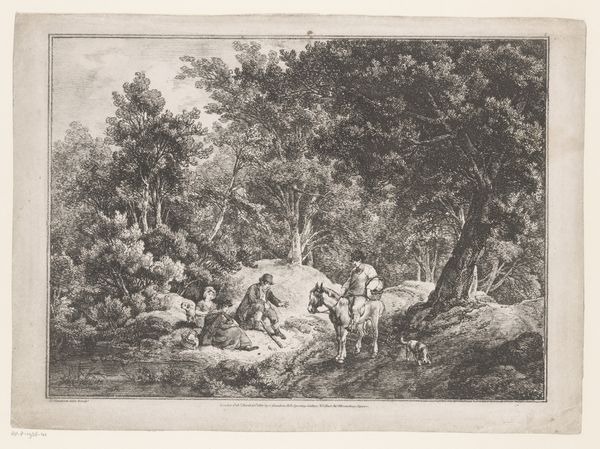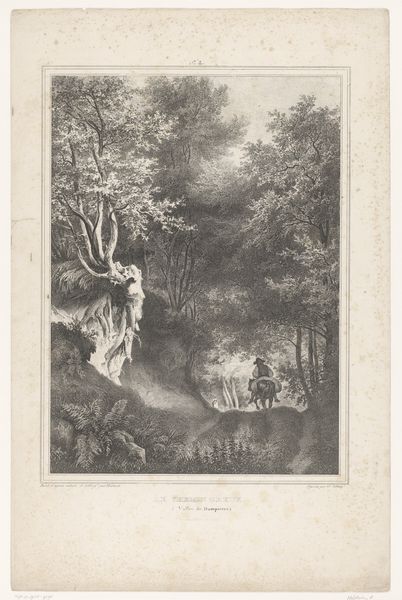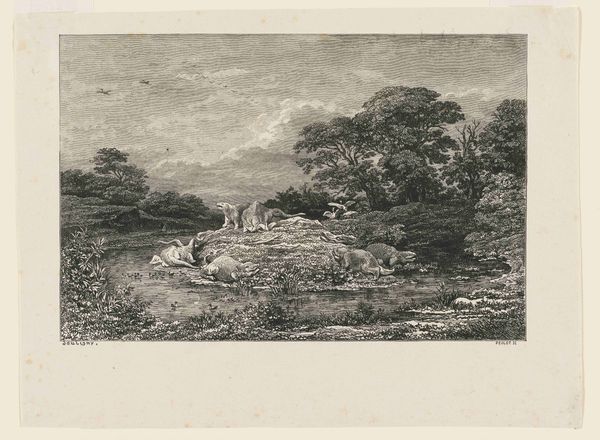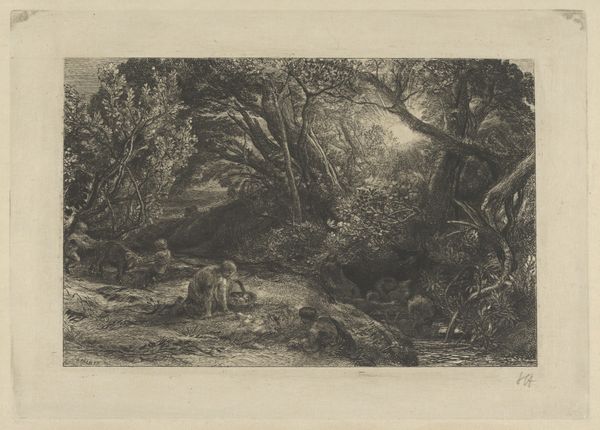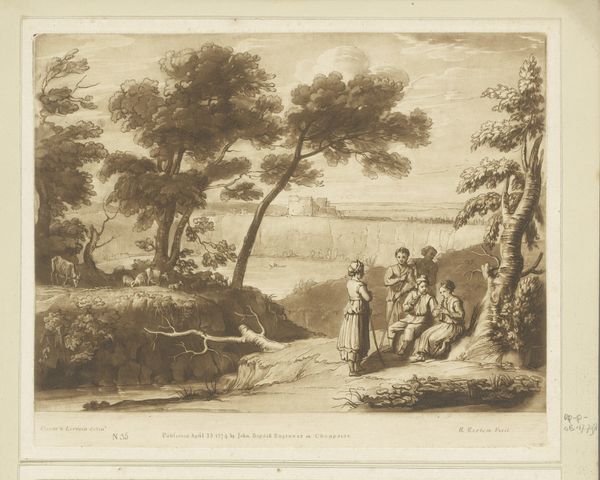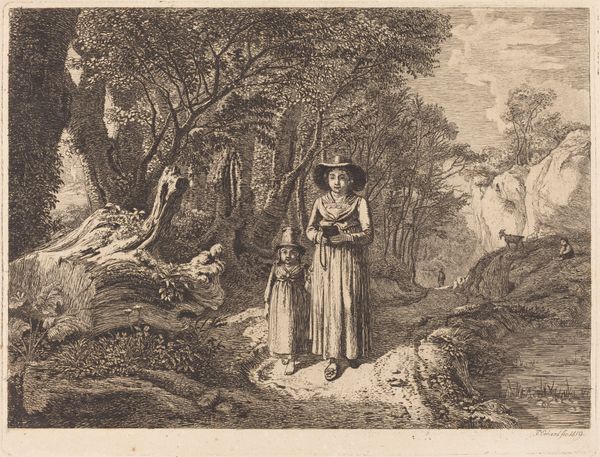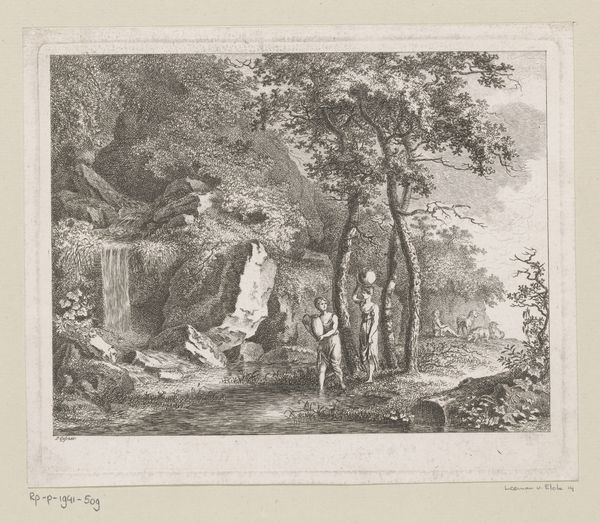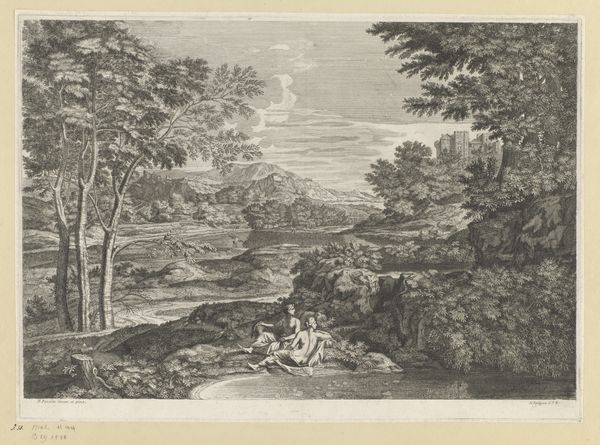
Dimensions: height 200 mm, width 265 mm
Copyright: Rijks Museum: Open Domain
Johann Christoph Erhard made this landscape, featuring an old man, using etching, a printmaking technique. The plate would have been metal, likely copper or zinc. The artist would have coated the plate with a waxy, acid-resistant substance called a ground, and then scratched an image into it. The plate was then submerged in acid, which bit away at the exposed lines, creating grooves. Ink was then applied to the plate and wiped away from the surface, remaining in the etched lines. Finally, the plate would be pressed onto paper, transferring the image. The result is a finely detailed scene, with a rich range of tones achieved by varying the density and depth of the etched lines. The image depicts a man walking through foliage. Note the intense labor involved in producing such a detailed print, and how the marks of that labor, etched into the metal and printed onto paper, are integral to the artwork's aesthetic and meaning. This reminds us that the most evocative and beautiful images can be born from the most industrious processes.
Comments
No comments
Be the first to comment and join the conversation on the ultimate creative platform.
